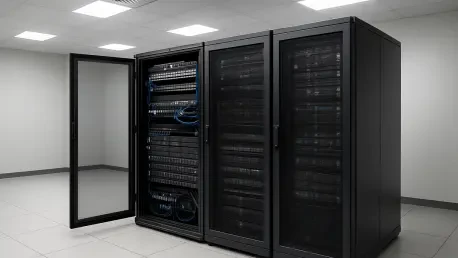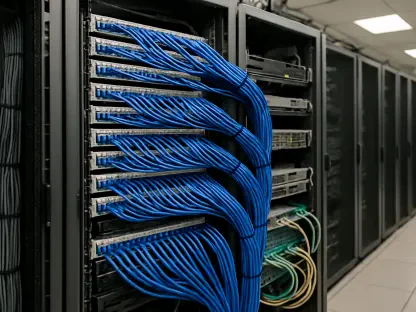In an era where digital infrastructure underpins nearly every aspect of daily life, the vulnerability of data centers to natural disasters like flooding poses a significant threat not just to technology, but to entire communities. These facilities, crucial for powering emergency services, healthcare systems, and public utilities, have become indispensable as the demand for data processing skyrockets with advancements in artificial intelligence. Yet, as climate-driven extreme weather events grow more frequent and severe, the risk of flooding to these critical hubs intensifies. A single disruption can delay emergency responses, disrupt hospital operations, and hinder recovery efforts, amplifying the stakes for societal resilience. This pressing challenge demands a reevaluation of how data centers are designed, sited, and protected to safeguard the interconnected systems that depend on them. Exploring updated strategies and standards offers a path forward to mitigate these risks effectively.
The Growing Threat to Critical Infrastructure
The reliance on data centers for essential services has never been greater, with hospitals, emergency response units, and utilities depending on uninterrupted access to data for life-saving operations. When flooding strikes, even if a facility avoids direct water damage, the ripple effects can be catastrophic, as power outages or connectivity losses disrupt critical functions. Historical events, such as the devastating impact of Superstorm Sandy over a decade ago, exposed this fragility when backup generators in Lower Manhattan failed, leaving vital systems offline. Today, with an even deeper integration of digital infrastructure into community safety nets, the consequences of such failures are magnified. The urgency to address flood risks is clear, as data centers are no longer just tech hubs but lifelines for public welfare, making their protection a priority that extends far beyond corporate interests to the heart of societal stability and security.
Moreover, the escalating frequency of extreme weather events driven by climate change compounds the threat to data centers, challenging the adequacy of existing protective measures. Traditional planning often underestimates the scale of modern storms, leaving facilities exposed to unexpected inundation. Beyond the immediate damage to equipment, flooding can sever communication networks, stalling emergency coordination and prolonging recovery periods for affected areas. This interconnectedness means that a single point of failure in a data center can cascade into widespread societal disruption, from delayed medical care to halted disaster response efforts. Addressing this vulnerability requires a shift in perspective, recognizing that safeguarding these facilities is not merely a technical concern but a fundamental component of community resilience. Proactive steps must be taken to ensure that the digital backbone supporting essential services remains operational under the harshest conditions.
Limitations of Traditional Flood Risk Tools
One of the most significant barriers to protecting data centers from flooding lies in the outdated methodologies used for assessing risk, particularly the reliance on conventional flood maps. These maps, often based on the concept of a 100-year flood zone, fail to capture the increasing intensity and unpredictability of contemporary storms, leaving many facilities vulnerable. Data from the Federal Emergency Management Agency (FEMA) indicates that a substantial portion of flood insurance claims—around 40%—originate outside designated high-risk areas, underscoring the inadequacy of these tools for modern planning. As data centers are frequently sited based on such flawed assessments, the potential for disaster looms large, threatening not only the facilities themselves but also the communities that depend on their services. A fundamental overhaul of risk evaluation is essential to align with current environmental realities.
Additionally, the shortcomings of traditional flood mapping are compounded by the rapid pace of urban development and climate shifts, which render historical data less relevant. Storms that once occurred infrequently now strike with alarming regularity, overwhelming infrastructure designed under old assumptions. For data centers, this discrepancy between mapped risks and actual threats can lead to catastrophic failures, disrupting critical operations at the worst possible moments. The American Society of Civil Engineers (ASCE) has responded to this gap by updating its standards to include the 500-year floodplain as a regulated hazard area, a move informed by the devastating impacts of recent hurricanes. Adopting these revised benchmarks is crucial for ensuring that data centers are positioned and built to withstand the evolving nature of flood risks, thereby protecting the vital societal functions they support from unforeseen interruptions.
Modern Standards for Flood Mitigation
To counter the growing flood risks, new engineering standards offer a robust framework for enhancing the resilience of data centers against natural disasters. The updated ASCE 24-24 guidelines, for instance, expand the definition of flood hazard areas to encompass the 500-year floodplain, acknowledging the limitations of past approaches. These standards also mandate rigorous performance testing for dry floodproofing solutions, such as barriers, under conditions set by the American National Standard for Flood Mitigation Equipment (ANSI/FM 2510). Such measures ensure that protective systems can withstand real-world challenges, providing a higher degree of reliability. By integrating these updated requirements, data centers can better shield their operations, preventing disruptions that could jeopardize community safety during critical times of need.
Beyond design enhancements, the ASCE 24-24 standards emphasize operational preparedness through mandatory annual inspections, maintenance protocols, and deployment drills for flood mitigation equipment. These proactive practices ensure that protective measures remain effective over time, addressing both physical and procedural vulnerabilities. For data centers, this means not only installing advanced flood barriers but also cultivating a culture of readiness to respond swiftly when disaster strikes. Such comprehensive strategies are vital, as they minimize the risk of system failures that could cascade into broader societal impacts, from delayed emergency services to compromised healthcare delivery. Embracing these modern standards represents a significant step toward fortifying digital infrastructure, ensuring that it remains a dependable pillar for communities facing the increasing unpredictability of extreme weather events.
Building a Resilient Future
Looking back, the journey to protect data centers from flood risks revealed a landscape of evolving challenges and innovative responses that shaped a more secure digital infrastructure. The recognition of outdated flood maps as unreliable prompted a shift toward expanded hazard zones, while rigorous testing and maintenance protocols fortified physical defenses against nature’s wrath. These efforts underscored a profound truth: safeguarding data centers was never just about technology but about preserving the lifelines of entire communities. Reflecting on past failures, such as those during historic storms, highlighted the urgency of adaptation, driving the adoption of updated engineering standards that prioritized resilience. Moving forward, the focus must remain on continuous improvement, integrating emerging technologies and climate data to refine flood mitigation strategies. Collaboration between industry stakeholders, policymakers, and engineers will be essential to sustain this momentum, ensuring that data centers stand as bastions of reliability amidst the growing unpredictability of environmental threats.









